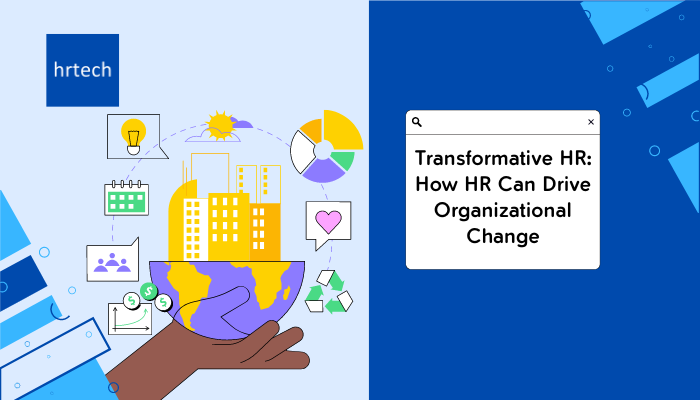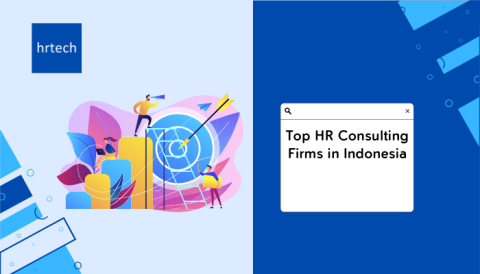Gone are the days when Human Resources was all about recruitment and emergency responses. Today, HR stands at the forefront of innovation, crucial for any organization aiming for success and longevity. With the HR technology market projected to soar to $30 billion by 2025, it’s clear that the future of HR is not just about people management—it’s about leading change and embracing technology. This shift marks a new era for HR,
Let’s see how innovation can change the world of HR!
Innovation is crucial for the success and sustainability of organizations. Human Resources (HR) plays a pivotal role in fostering innovation within organizations by driving change, cultivating a culture of creativity, and implementing strategies that encourage and support innovative thinking. HR innovation refers to the use of HR strategies, systems, processes, and technologies that facilitate workplace and workforce transformation. Its significance lies in the ability to attract and retain top talent, enhance employee engagement and productivity, and ultimately drive organizational growth and success.
As organizations evolve, so does the role of HR in encouraging organizational change and innovation. Traditionally, HR was primarily focused on administrative tasks such as hiring, training, and managing employee benefits. However, in today’s dynamic business environment, HR has become a strategic partner in driving innovation and change. HR professionals now need to possess a deep understanding of the organization’s goals and challenges, as well as the ability to identify and implement innovative solutions to address them. This blog post explores the significance of HR innovation and its evolving role in encouraging organizational change and innovation.
How HR Drives Innovation in the Workplace?

- Strategically recruiting innovative talent using AI and digital tools: HR leverages AI-powered recruitment tools to identify and attract top talent with a track record of innovation. One of the key ways HR drives innovation within organizations is by strategically recruiting innovative talent. HR departments can leverage artificial intelligence (AI) and digital tools to streamline the recruitment process and identify candidates who possess the necessary skills and mindset for innovation. These tools can analyze resumes, assess candidates’ problem-solving abilities, and even conduct video interviews, saving time and ensuring that only the most qualified individuals are considered for the role.
- Automating onboarding and HR processes for efficiency: Streamlining administrative tasks frees up time for HR professionals to focus on strategic initiatives. Another way HR fosters innovation is by automating onboarding and HR processes. By implementing digital tools and systems, HR can reduce administrative burdens and free up resources for more strategic initiatives. Automated onboarding processes, for example, can ensure that new employees have a smooth transition into the organization, allowing them to focus on contributing to innovative projects right from the start. Additionally, automated HR processes, such as performance management and employee feedback systems, enable HR professionals to gather valuable data and insights that can inform innovation strategies.
- Facilitating a digital workplace environment for collaboration: Virtual collaboration platforms enable employees to share ideas and work together seamlessly. HR also plays a crucial role in creating a digital workplace environment that fosters collaboration and innovation. By implementing digital collaboration tools, HR can enable employees to collaborate and share ideas seamlessly, regardless of their physical location. Whether it’s through project management platforms, instant messaging apps, or virtual meeting tools, HR can empower employees to work together, exchange ideas, and drive innovation across the organization.
- Implementing employee self-support portals for better resource access: Self-service portals empower employees to access information and resources independently. To foster innovation, HR can implement employee self-support portals that provide easy access to resources, information, and training materials. These portals can serve as a centralized hub where employees can find the tools and knowledge they need to innovate and excel in their roles. By empowering employees with self-service options, HR can enhance efficiency and productivity while enabling individuals to take ownership of their development and growth.
- Encouraging a culture of innovation through gamified training and development: Gamification enhances engagement and fosters a learning culture conducive to innovation. HR can promote a culture of innovation by incorporating gamified elements into training and development programs. Gamification techniques, such as leaderboards, badges, and rewards, can make learning and development more engaging and enjoyable. By incorporating these elements into training initiatives, HR can motivate employees to acquire new skills, explore innovative approaches, and embrace a continuous learning mindset.
- Using chatbots for efficient HR query handling and task automation: Chatbots provide instant support and automate routine HR tasks, boosting productivity. To enhance efficiency and productivity, HR can leverage chatbots to handle common HR queries and automate repetitive tasks. Chatbots equipped with natural language processing capabilities can interact with employees, answer their questions, and provide assistance in real time. By automating these routine tasks, HR professionals can focus on more strategic initiatives that drive innovation and add value to the organization.
- Promoting employee wellness with dedicated tools and resources: Employee well-being initiatives contribute to a healthy and motivated workforce. HR can promote employee well-being by providing dedicated tools and resources that support physical, mental, and emotional health. These resources can include wellness apps, mindfulness programs, flexible work arrangements, and access to counseling services. By prioritizing employee wellness, HR creates an environment where individuals feel supported, motivated, and empowered to think innovatively.
- Leveraging employee listening tools for engagement and feedback: Continuous feedback mechanisms enable HR to understand employee needs and preferences better. To foster innovation, HR must ensure that employees feel heard and valued. Employee listening tools, such as surveys, feedback platforms, and suggestion boxes, can provide valuable insights into employee experiences, ideas, and concerns. By actively seeking and acting upon employee feedback, HR can create a culture of openness and trust, where individuals feel encouraged to share their innovative ideas and contribute to organizational growth.
“Exploring innovative recruitment tools and automating HR processes can be daunting. Simplify your journey with a marketplace that offers the best in HR technology. Discover how our platform can streamline these innovations for your team.”
Key Strategies for HR to Foster Organizational Innovation:

Making innovation a core organizational value:
To foster organizational innovation, HR must ensure that innovation is a core value embedded in the organization’s culture. HR can collaborate with leadership to define and communicate a clear vision and mission that emphasizes the importance of innovation. By aligning performance management systems, recognition programs, and career development initiatives with the organization’s innovation goals, HR can encourage employees to embrace innovative thinking and behaviors.
Promoting collaboration across departments:
Collaboration is a key driver of innovation. HR can promote collaboration across departments by implementing cross-functional projects, encouraging knowledge sharing, and fostering a sense of community within the organization. By breaking down silos and creating opportunities for employees to collaborate and exchange ideas, HR can facilitate the emergence of innovative solutions that leverage diverse perspectives and expertise.
Creating recognition and reward programs for innovative efforts:
Recognizing and rewarding innovative efforts is essential for fostering a culture of innovation. HR can design recognition and reward programs that celebrate and incentivize innovative thinking. Whether it’s through monetary rewards, public recognition, or career advancement opportunities, HR can motivate employees to actively contribute to innovation initiatives and feel valued for their creative contributions.
Offering cross-departmental training for skill enhancement:
To foster innovation, HR can offer cross-departmental training programs that enhance employees’ skills and expose them to different perspectives. By providing opportunities for employees to learn from colleagues in other departments, HR can promote a culture of continuous learning and knowledge exchange. These training programs can also encourage employees to explore new ideas, challenge conventional thinking, and develop innovative solutions to organizational challenges.
Investing in and adopting new HR technologies:
HR professionals must stay up-to-date with the latest HR technologies that facilitate workplace and workforce transformation. By investing in and adapting new HR technologies, such as AI-powered recruitment tools, performance management systems, and employee engagement platforms, HR can streamline processes, gather valuable data, and support innovative initiatives. Staying at the forefront of HR technology allows HR professionals to leverage these tools to drive innovation and enhance organizational performance.
“Making innovation a core value starts with having the right tools. Our comprehensive hrtech marketplace simplifies finding and implementing these tools, aligning perfectly with your innovation goals.”
Challenges and Solutions in HR Innovation:

Addressing resistance to change within the organization:
One of the significant challenges HR faces in fostering innovation is resistance to change within the organization. Employees may be reluctant to embrace new technologies, processes, or ways of working due to fear of the unknown or a desire to maintain the status quo. To address this challenge, HR must communicate the benefits of innovation and provide training and support to help employees adapt to change. By involving employees in the innovation process and highlighting the positive impact on their work and career development, HR can overcome resistance and foster a culture of innovation.
Managing limited resources and budget constraints:
Limited resources and budget constraints can pose challenges to HR in driving organizational innovation. HR professionals must be resourceful and creative in finding innovative solutions within the available means. This can involve leveraging free or low-cost technology tools, forming strategic partnerships, or reallocating resources to prioritize innovation initiatives. By demonstrating the value and potential return on investment of innovative projects, HR can secure the necessary resources and support from the organization.
Building acceptance and buy-in for new initiatives:
Building acceptance and buy-in for new initiatives is crucial for successful innovation. HR must effectively communicate the purpose, benefits, and potential impact of new initiatives to stakeholders at all levels of the organization. By involving key stakeholders in the decision-making process and addressing their concerns, HR can build trust and support for innovative projects. Additionally, HR can leverage success stories and case studies to demonstrate the positive outcomes of previous initiatives, further encouraging acceptance and buy-in.
Overcoming communication barriers between departments:
Effective communication is essential for fostering innovation across departments. HR must actively work to overcome communication barriers that may exist within the organization. This can involve implementing communication platforms and tools that facilitate information sharing, encouraging open dialogue and knowledge exchange, and promoting cross-functional collaboration. By fostering a culture of transparent and effective communication, HR can ensure that innovative ideas and insights are shared and acted upon, regardless of departmental boundaries.
Success Stories of HR Innovation:

Examples of AI implementation in recruitment for efficiency:
HR innovation has seen significant success through the implementation of AI-powered recruitment tools. These tools have revolutionized the hiring process by automating candidate screening, analyzing resumes, and even conducting initial interviews. As a result, HR professionals can focus their time and efforts on engaging with top candidates and assessing their fit within the organization. This streamlined recruitment process has not only improved efficiency but also increased the likelihood of hiring innovative and high-performing individuals.
Impact of automated HR processes on organizational performance:
Automated HR processes have had a profound impact on organizational performance. By automating administrative tasks such as payroll processing, leave management, and performance evaluations, HR professionals can dedicate more time to strategic initiatives that drive innovation. These automated processes also ensure accuracy, consistency, and compliance with regulations, leading to improved employee satisfaction and overall organizational performance.
Transforming HR through Agile Workforce Solutions
Conclusion:
In conclusion, the role of HR in fostering innovation is critical to gaining a competitive advantage in today’s fast-paced business environment. By adopting advanced HR strategies and technologies, organizations can catalyze creativity and drive sustainable growth.
Looking ahead, the future prospects for HR in driving organizational innovation are promising. As technology continues to advance, HR professionals will have access to even more innovative tools and solutions that facilitate workplace and workforce transformation. By embracing these advancements and continuously evolving their strategies and approaches, HR can continue to play a pivotal role in fostering innovation and driving organizational success.
“As we look to the future of HR’s role in organizational innovation, being equipped with the latest technologies is crucial. Our hrtech marketplace offers a curated selection of tools designed for maximum workplace transformation. Dive into our resources and be at the forefront of HR innovation.” Schedule a call now! To know more.





